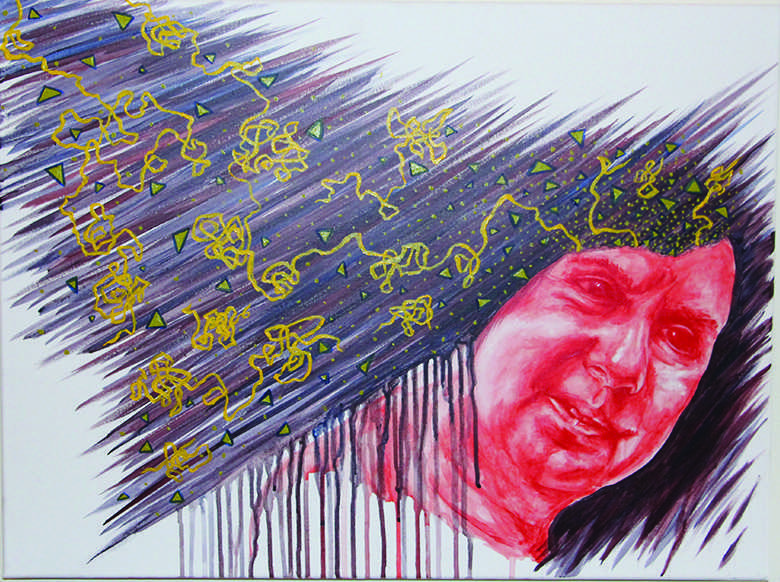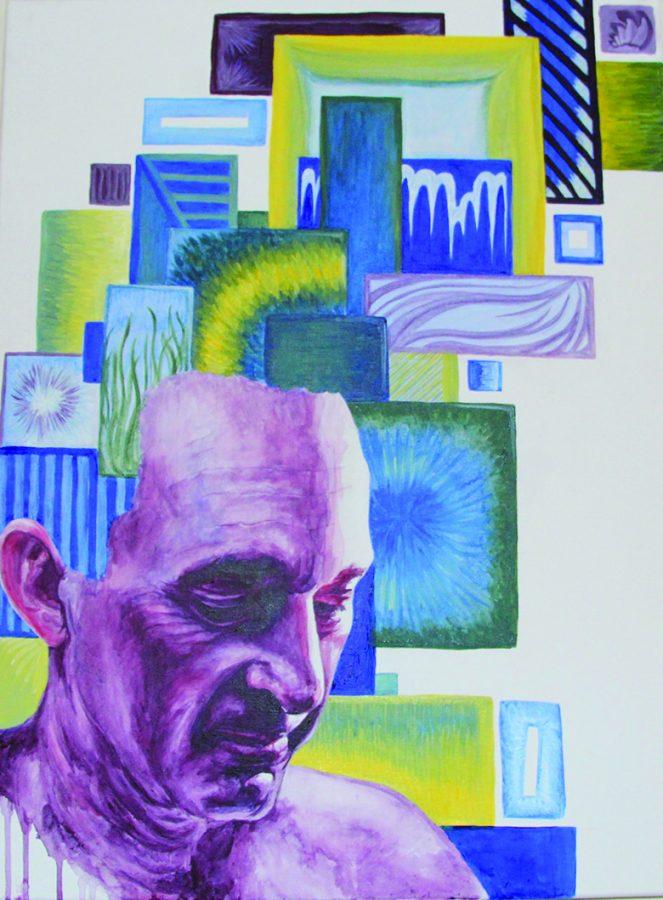Camille Butterfield connects art to human thoughts
Credit: Bridget Barsanti
Camille combined her interest in portraits with her interest about human thoughts to create her AP concentration.
October 18, 2016
From terrible twos to her teenage years, senior Camille Butterfield has always had a deep passion for art. This is no surprise, for it seems that this excitement for art runs in the family. Her father is an architect who taught her about drawing, and her mother was a talented art major before becoming an English major. Additionally, her grandmother is a painter for The Cheesecake Factory restaurants, and works in her own art studio in her free time.
“Paintings and drawings hang all around my house, and as a toddler, I was happy for hours with any kind of art project. As I grew older, that happiness stayed with me; I never saw a reason to stop making art, because it was, and is, a source of joy,” Camille said. “As a small child, my parents handed me art supplies to give me something to do, and making crayon scribbles over any paper I could get my hands on was very satisfying. Although most small children go through this phase, I think I just never outgrew it,” Camille continued.
Throughout her life, Camille has used art as a tool to channel her emotions. She commented, “Giving visual substance to my innermost feelings remains a fascinating and soothing process for me.”
Camille has also found that art has helped her learn more about herself as a person, as she is free to express herself in a purely authentic way. “Most of my paintings don’t start out with a concrete plan, and I love that every piece is a discovery; not only am I learning about the extent of my abilities, I am also learning about and connecting with a deeper part of myself,” Camille said.
Camille does not stick to one media, but rather enjoys experimenting with new media, and each media means something different to her. “Painting with acrylics has always been kind of my happy place. Because I grew up painting mainly at home in my own space, I feel more relaxed and less rushed when I paint, and feel looser and less technical than drawing. It’s fun because it’s harder to control, and sometimes you have to embrace the happy accidents that emerge. It combines the fun of watercolors with some of the technical aspects of drawing, and contributes unique textures that are fun to experiment with,” Camille added.
Camille’s AP concentration is about people processing ideas, thoughts, and emotions. She stated, “I chose this because I knew I wanted to do portraits, but that tends to be a really popular concentration, so I wanted to find a unique way of presenting them. When I was little, I played a game with a family friend where she told me each hair on my head was a thought I’d had. We’d tug gently on each other’s hair, asking, ‘Which thought is this? Which thought is that?’ and exchanging our stories. This kind of gave me the idea of replacing people’s hair with my own visual representations of thoughts and emotions, and it also allows most of the visual emphasis to be on the facial structure, without the hair being distracting. The way I see it, all my technical skill lies in depicting the face, which I grid from a photograph, but removing the hair lets me just have fun and add my own creative, abstract elements around the face.”
While art is often very individual, Camille considers her AP art class a close group. “ I don’t feel very much like an individual in the class; we are all in the same boat, and there is a great sense of camaraderie among us. While it’s exciting for all of us to be able to pursue our own individual topics and mediums for our concentrations, we are very much united as a group,” Camille said.


